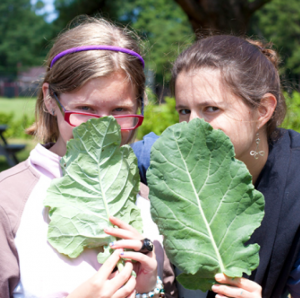Happy graduation season! In the coming weeks, high school seniors around Vermont are finishing up classes and are making (or have already made) big decisions about What Comes Next. Data from the 2017 Youth Risk Behavior Survey (YRBS) tell us that 83% of Vermont’s high school seniors would “definitely or probably” enroll in some type of post-secondary education such as a vocational training program, military service, community college, or a four-year college. Among seniors
We know from research that afterschool and summer learning programs contribute to college and career readiness for youth. Some programs expose youth to the idea and importance of college in direct ways by taking them on campus visits and work with families to help get the process started. Many more programs put students on the path to selecting and attending post-secondary education by providing them with opportunities to learn about careers and participate in formative experiences such as internships and community service projects. And while classroom learning provides theoretical knowledge, afterschool programs provide opportunities for students to apply their learning in tangible ways, such as by working in teams on real-world problem-solving. From attending afterschool programs, youth can gain a better idea of how to navigate their futures than those who do not.
Results from the 2017 YRBS, which was completed by about 20,000 high school students across Vermont show that among students who did not participate in any amount of afterschool programming during the 2016-17 school year, 65% were planning on pursuing post-secondary education. As the number of average weekly hours of afterschool programming increased (up to 19 hours per week), so did the percentage of students who indicated on the survey that they planned on enrolling in school beyond high school: 82% of students who attended 1-4 weekly hours of programming, 88% of students who attended 5-9 hours of weekly programming, and 91% of students who attended between 10 and 19 weekly hours of programming.
At each level of programming, the percentages of students who said they would attend post-secondary education were slightly higher for high school seniors specifically. Seventy-one percent of seniors who did not attend any afterschool programming in 2016-17 said they would enroll in post-secondary education. And as with the student body overall, these percentages also increased incrementally for each level of weekly hours of afterschool programming. Among seniors who participated in 1-4 weekly hours of programming, 87% said they would attend post secondary education; among seniors who participated in 5-9 weekly hours of programming, 91% said they would attend post secondary education; and among seniors who participated in 10-19 weekly hours of programming, 93% said they would attend post secondary education.
The 2017 YRBS data show that high school students who attend more hours of afterschool programming are more likely to say that the will “probably or definitely” attend post-secondary education such as a vocational training program, military service, community college, or a four-year college after high school. While there are many factors that contribute to students’ decisions about what path(s) to pursue after high school, we are confident that afterschool plays a positive role in helping prepare students to continue their education in prepared and intentional ways.
Read past Data Digest blog posts here:
- Afterschool participation and depression/suicide (May 2019)
- Afterschool participation and alcohol (Apr. 2019)
- Afterschool participation and weight and obesity (Mar. 2019)
- Afterschool participation and safe sex (Feb. 2019)
- Afterschool participation and opioid abuse (Jan. 2019)
- Afterschool participation and carrying weapons to school/school violence (Dec. 2018)
- Afterschool participation and connection with community (Nov. 2018)
- Afterschool participation and bullying (Oct. 2018)
- Afterschool participation and screen time/physical activity (Sept. 2018)
- Afterschool participation and academic performance (Aug. 2018)
- LGBT students and afterschool participation (July 2018)

